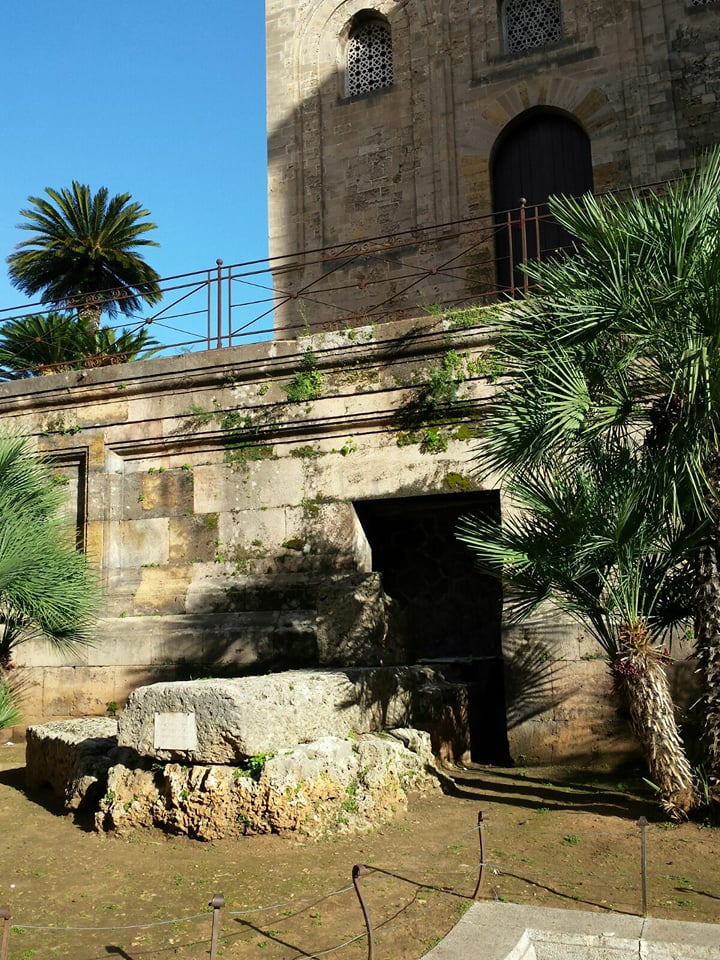
Read Italiano version
Resti delle mura sono visibili ancora oggi su via Maqueda – altezza chiesa di San Cataldo (vd foto)- su corso Alberto Amedeo, e via del Celso (Palazzo Galletti di Santamarina).
Sotto il centro storico di Palermo vi sono, in buona parte ancora sepolti, i resti dell’antica Panormos che, insieme a Mozia e Solunto, fu una delle tre città in cui si ritirarono i Fenici “quando i Greci giunsero in gran numero” per conquistare la Sicilia.
La vita e le vicende stesse dell’originario insediamento, fondato nell’VIII secolo A.C. su una lingua di terra tra i torrenti Kemonia e Papireto, sono legate all’esistenza del grande porto che le valse, presso i Greci, il nome di Panormos (tutto porto). La città nel 480 A.C. fece infatti da base per la flotta Cartaginese durante lo scontro con i Greci, e, nel 254 a.C. capitolò soltanto dinanzi alla potentissima flotta di Roma.
Seppur non siano molte le testimonianze archeologiche dell’antica Panormos é ben nota l’antica struttura urbana, con strade a pettine, distinta in: città vecchia-Paleopolis e città nuova-Neapolis.
La parte meglio conservata e più conosciuta dell’antica cinta fortificata risale al V sec. a.C., (di tipo greco, a grandi blocchi disposti a filari regolari, senza l’uso di malta) ed è visibile lungo il Corso Alberto Amedeo, tra la piazza Peranni e la piazza Indipendenza. Sui blocchi di pietra che la compongono sono incisi dei segni, forse delle lettere puniche di riconoscimento. Recenti scavi nell’area del Palazzo dei Normanni e, precisamente, al di sotto della “Sala del Duca di Montalto” hanno messo in luce altri resti delle fortificazioni dell’antica città.
*ENGLISH
The remains of the walls can still be seen today on via Maqueda – church of San Cataldo (see photo) – on corso Alberto Amedeo, and via del Celso (Palazzo Galletti di Santamarina).
Underneath the historic town centre of Palermo there are, still largely buried, the remains of the ancient Panormos which, together with Mozia and Solunto, was one of the three cities in which the Phoenicians withdrew “when the Greeks came in large numbers” to conquer Sicily. The life and the events of the original settlement, which was founded on a strip of land between the Kemonia and Papireto streams in the eighth century B.C., are linked to the existence of the great port that earned the town the name of Panormos (all port) given by the Greeks. Actually in 480 B.C. the port was the base for the Carthaginian fleet during the clash with the Greeks, and in 254 BC. capitulated only to the powerful fleet of Rome. There are not many visible remains, but the ancient urban structure with comb-shaped streets is known and distinguished into: old city-Paleopolis and new city-Neapolis. The best preserved and best known part of the ancient fortified walls, which date back to the fifth century.B.C., (of Greek type, with large blocks arranged in regular rows, performed without the use of any mortar), is that along Corso Alberto Amedeo, between Piazza Peranni and Piazza Indipendenza. On the stone blocks that compose the walls, some signs are engraved and seem to be Punic letters. Recent excavations in the area of Palazzo dei Normanni and, precisely, below “Sala del Duca di Montalto” have revealed other ruins of the old town fortifications.
